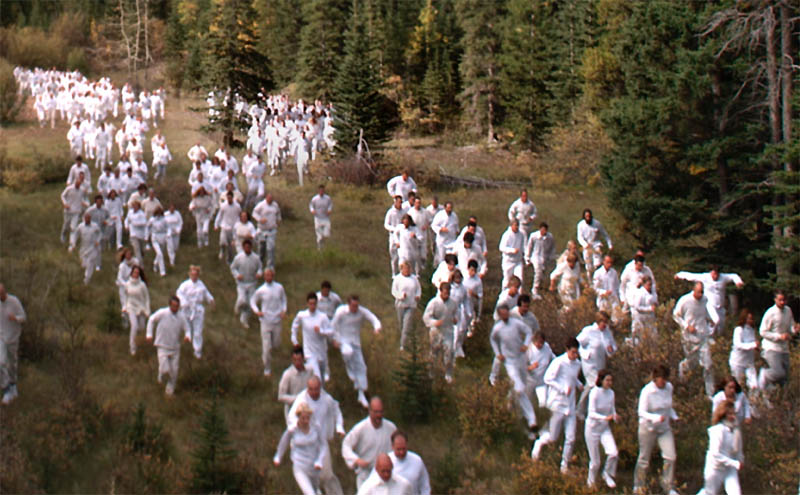

And these melting issues are not exclusive to Greenland, but are happening in polar regions worldwide. This melt from Greenland alone would be enough to displace several hundred million people worldwide and destroy many coastal cities. If Greenland’s ice sheet were to melt entirely, it has enough water to cause a 24-foot rise in global sea levels. And this melt is accelerating to levels that are in line with the worst-case models of climate change. This is enough to fill 80 million Olympic-size swimming pools or the entirety of Lake Ontario, Lake Tahoe, and the Dead Sea – combined. It’s estimated that the Greenland ice sheet, of which Russell Glacier is a part, loses 200 gigatons of ice per year. Timmy Hansen (SWE), Andretti United Extreme E, and Johan Kristoffersson (SWE), Rosberg X Racing, take a swim on the Russell Glacier. Last week, rain fell on the peak of the Greenland ice cap for the first time ever, another sign of the climate emergency we are facing. In addition, unfrozen water on the glacier surface is becoming more common during summer months, and this melting releases trapped methane (from ancient bacteria), which leads to a feedback loop of climate change.

While the course for this weekend’s race does not race on the glacier proper, it does race on land that was once covered by the glacier – but is not anymore, due to rising global temperatures. Like many glaciers, Russell Glacier has shrunk over time due to climate change. The bottom line is that five of the nine teams will compete in the “final race,” as opposed to three- and four-car races from the previous Desert and Ocean X Prixs, which should make for some more exciting wheel-to-wheel racing in the finals. The race doesn’t drive across the glacier itself, in the interest of not causing more damage to the already-melting ice.Įxtreme E has continued to tweak the race format, with a complicated multi-race qualifying format that I won’t bother to explain because, frankly, it’s confusing and will probably change again before the next race anyway. Finally, there is a “rock garden” section with medium- and large-sized rocks that will require a slower approach than the rest of the course. The course features significant elevation change up and down large dunes, along with multiple trips across a large riverbed and some relatively wide-open sections with a wide variety of potential racing lines, which should give opportunities for passing. Rain is also forecast for Sunday, so conditions might be quite interesting. This time out we’ll be seeing wetter and even coarser terrain, driving over sand, rocks, dirt, and mud next to an icy-but-melting glacier. The sand in Senegal was coarser than Saudi Arabia’s desert dust, which allowed for more exciting racing as following cars weren’t trapped in a dust cloud.

In the first race in the desert, visibility was very low, which made it impossible for following cars to catch up after the first couple corners. In Senegal we saw a much improved race as compared to the inaugural Desert X Prix. Those races highlighted desertification, rising sea levels, and marine ecosystem degradation, all of which are caused by human activity. This will be Extreme E’s third race, after the Desert X Prix in Saudi Arabia and the Ocean X Prix in Senegal. In the case of the Arctic X Prix, the focus is on ice melt leading to global sea level rise.
THE MOST EXTREME RACE ON EARTH SERIES
Electric off-road racing series Extreme E will race at Russell Glacier at the Arctic X Prix near Kangarlussuaq in Greenland this weekend, in the first motorsport event ever to be held in Greenland.Įach Extreme E venue is picked to bring awareness to one aspect of environmental damage humans are doing to the Earth.


 0 kommentar(er)
0 kommentar(er)
